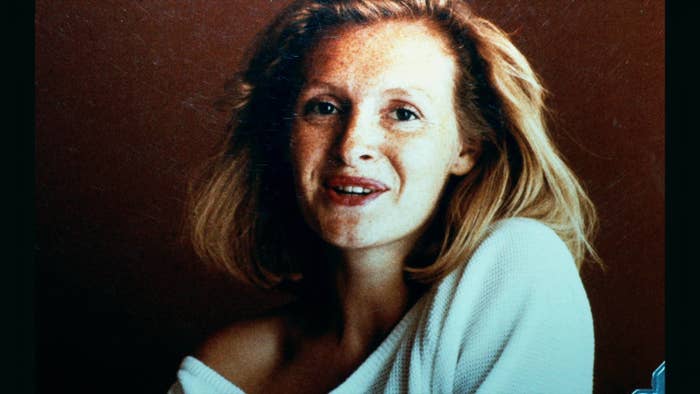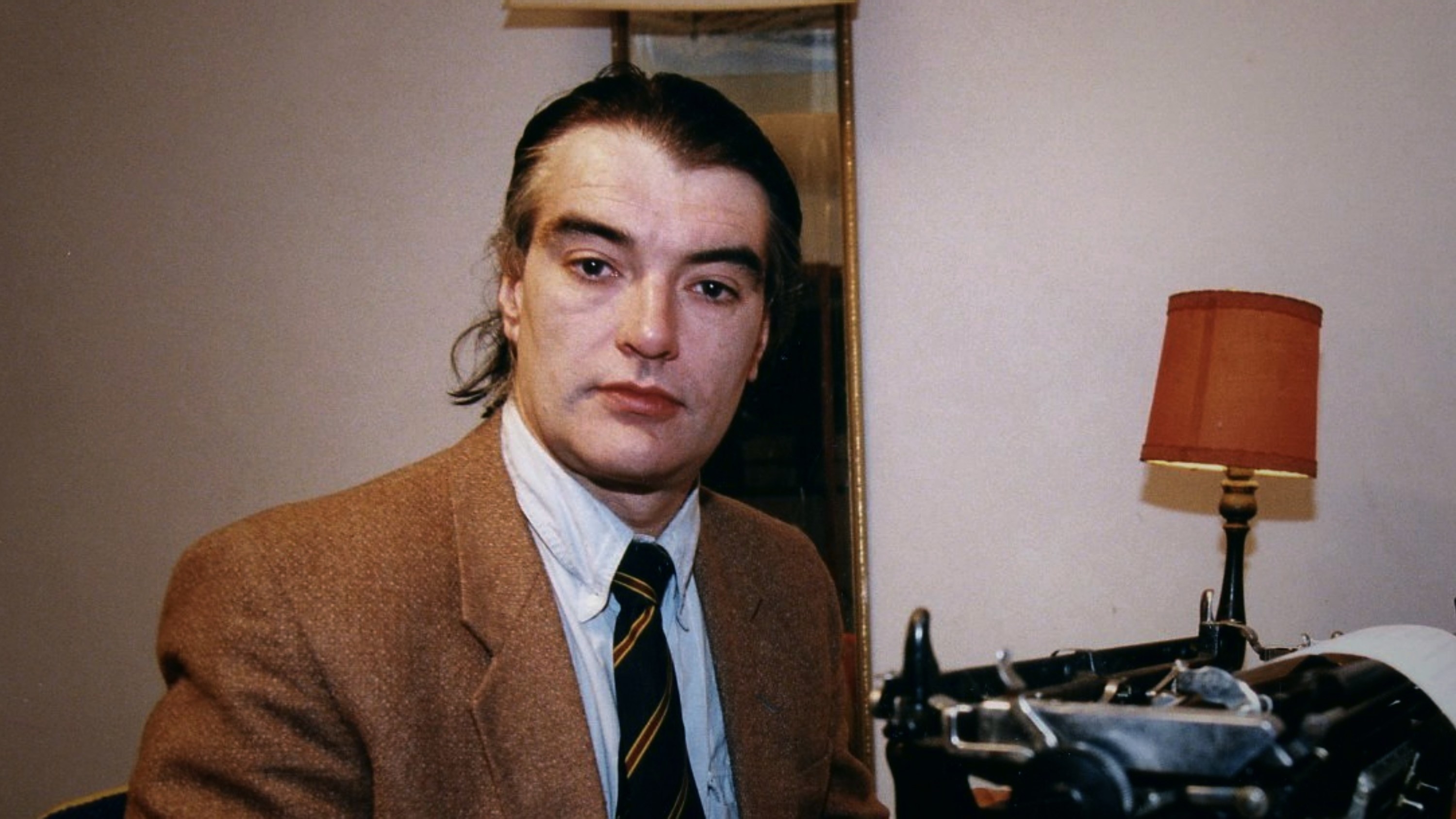
Recently, the successful true crime offerings from streamers have tended to fall into two traps. On the one hand, there are just-the-gore rehashings of serial killer sprees and police chases — like Netflix’s Night Stalker — that presume murder cases are interesting mainly because of their extreme violence.
And then there are awkwardly self-important productions, like the recent Elisa Lam docuseries, that get so caught up in wresting facile cautionary lessons from the real-life events that they fail to capture why a mystery was gripping in the first place.
Sophie: A Murder in West Cork, now streaming on Netflix, attempts to avoid these traps by striking a balance between meaningful analysis and re-creating the original tension around the crime. The three-part documentary tackles the death of French television producer Sophie Toscan du Plantier, who was married to Daniel Toscan du Plantier, a well-known movie producer who worked with Michelangelo Antonioni and Akira Kurosawa.
The story lands squarely in one of the more enduring categories of crime: solving the mysterious demise of a beautiful white woman. In 1996, Toscan du Plantier was violently murdered in her vacation home in the quaint Irish countryside town of West Cork just before Christmas. After her death, glamorous pictures of her were splashed across European newspapers and tabloids and the case became a bona fide media sensation. Even the town itself — inhabited by farmers, artsy newcomers, and vacationers like Toscan du Plantier — became something of a character in the story.
Toscan du Plantier’s murder has already spawned prestige productions, including a documentary, Murder at the Cottage, by the Oscar-winning director of My Left Foot, Jim Sheridan, and, more recently, a heavily promoted Audible podcast, West Cork. (The tagline: “Every countryside has a dark side.”)
Netflix’s version, A Murder in West Cork, is executive produced by the Oscar-winning producer of Man on Wire, Simon Chinn. It shows glimmers of originality in its meta approach to the genre’s seemingly endless appeal, exploring how these cases mushroom in the media and attain the status of town folklore. But even while these small gestures make the series stand out amid the banality of streaming true crime, it ultimately takes the genre’s least interesting and most moralistic approach by lavishing endless attention on the story’s criminal protagonist and the question of whether he’ll finally be brought to justice.

In promotional interviews, the producers of A Murder in West Cork provided the usual talking points about wanting to humanize Sophie Toscan du Plantier. In true crime, that tends to mean talking heads spouting platitudes about how the deceased lit up a room and, often, how she was a universally beloved wife and mother.
Toscan du Plantier was, in fact, a wife and the mother of a teen son at the time of her death.
But because her family agreed to participate in the series — not just her parents, but also her aunts and cousins, one of whom is also a producer of A Murder in West Cork — she doesn’t get reduced to the usual tropes.
The family explains that she wasn’t happy in her marriage, that she had her own career as a TV producer, and liked visiting her rustic West Cork cabin because she was tired of her glitzy Paris life. “There was an Alice in Wonderland quality to her,” said her aunt, who added that her niece liked to be alone. Her cousin pointed out Toscan du Plantier’s morbid sensibility and said “she had a dark side”; she had wanted to direct films based on elementary bodily fluids like breast milk, blood, sperm, and bile.
These preoccupations seemed to haunt her death. The crime itself was gruesome — she was bludgeoned to death, with a rock and a concrete block. The murderer left behind a messy scene; there was blood on some nearby thorny bushes and a fence. And even the smaller details were creepy: Her keys were still in the cabin’s back door, and the crime scene looked as if Toscan du Plantier had run or rolled down a hill in an attempt to escape.
The series smartly captures the way that the media’s identification with beautiful, rich white women victims feeds into their commodification.
If this crime had transpired more recently, DNA technology might have quickly solved it. Instead, in the absence of an obvious suspect, theories proliferated about what actually happened to Toscan du Plantier. The series shows how the crime became a flashpoint for the local community: The artsy crowd thought maybe a “repressed” farmer had a violent outburst and killer her, whereas the locals thought maybe a hippie “blow-in,” their term for a newcomer, might have been behind her death.
A Murder in West Cork also explores how journalists from major national papers projected their own feelings onto the case, fascinated by the victim’s glamour. One journalist said, “I saw this beautiful French woman on the front page and I thought: I’d like to know more about this woman.” The media fleshed out her interior life to a degree that was unusual for most crime victims. Her mother even shared excerpts of her diary with the newspapers, and the press tried to decode them — in order to better understand the victim and what happened to her.
“I don't want to get too fanciful about the whole thing — I've tried to keep riveted on the facts,” one woman columnist said about reading these excerpts, “but it was quite chilling to read.” Through these recollections, the series smartly captures the way that the media’s identification with beautiful, rich white women victims feeds into their commodification. Even an actor who played Toscan du Plantier in a low-budget TV re-creation recalls feeling a “kindredness” with her.
Then, in early 1997, a local journalist became one of the suspects.

Ian Bailey, a town eccentric, writer, and journalist, started covering the murder for the English papers. He floated his own theories in articles and conversations with locals, suggesting, for instance, that Toscan du Plantier’s famous producer husband might have hired a contract killer. If she had divorced Daniel, went Bailey’s logic, she would have received half of his money. (Bailey also circulated slut-shamey theories that Toscan du Plantier had lots of “male visitors.”)
A phone tip placed Bailey near the scene of the crime, which caught the attention of the Irish police; some scratches on his arms and a nick on his forehead made him a viable suspect. The case predated cellphone record searches, which made Bailey’s location that day difficult to pin down and his involvement in the crime open to speculation. He was eventually arrested — twice — but never confessed and was never criminally prosecuted.
The series loses dramatic steam and its unique cultural insight when it narrows the focus to Bailey himself, and the twists and turns of his efforts to clear his name. In 2003, he brought a libel case against six newspapers that had printed accusations about him. But rather than shutting down all the conjecture, his trial opened a Pandora’s box, becoming a kind of forum for all the theories that had circulated among the press and townspeople for years.
According to the testimony, Bailey had allegedly confessed to multiple people. A local teen who had once shared a ride with Bailey remembered that he mentioned bashing Toscan du Plantier in the head. And Bailey’s acquaintance testified about a bizarre projection-confession, in which he seemed to accuse the man of his own actions: “You scared her,” Bailey said accusingly. “She went off screaming and it stirred something in the back of your head; you went too far and had to finish her off.”
Bailey lost the libel case but continued filing appeals with the courts, the latest occurring as recently as 2018. (He also spoke out against the documentary: “All I can see from the Netflix production, there’s very little objectivity in it. It’s written from a biased slant.”)
Trials are themselves narratives, capable of illuminating how cultural systems operate. But A Murder in West Cork doesn’t delve into the story’s unusual criminal justice elements. Instead, it invests in the more common project of showcasing Bailey, almost asking the viewers to inspect his behavior and egotism. There is tons of footage — too much — featuring interviews with Bailey that seem to revel in the spectacle of the suspect shooting down accusations. Some of the details about Bailey are darkly odd and perversely compelling in their own way, like locals’ recollections of the bad nature poetry he recited at pubs. But it’s not clear why we need to see so much footage of him reciting it.
More important — and less underscored — is a fact uncovered during the trial: that Bailey had allegedly been violently abusive to his wife months before the murder. His casual denial of the abuse — it takes two to tango, he says —is one of the more chilling moments of the series, though it’s almost something of a footnote. (Perhaps this has something to do with his threats of a lawsuit and his wife allegedly not signing a release for the series.)
The story’s final act comes when Toscan du Plantier’s adult son pursues justice for his mother through the French courts. An Irish court would have required guilt to be proven beyond reasonable doubt, but in the French justice system a conviction only requires a preponderance of evidence.
Bailey was convicted in absentia by a Paris court in 2019. Since then, the family has been trying, unsuccessfully, to get Ireland to extradite Bailey. In some ways, it’s understandable that the series foregrounds the pain of the victim’s family and the evil of the perpetrator. But more exploration of the ethical or legal questions raised by the remarkable transnational legal battle would have been welcome.
Still, with its lively sources and shocking true story, Sophie: A Murder in West Cork is often enthralling. That might say less about this particular series, though, than about the state of true crime today. Capturing our attention with the astounding details of human tragedy is easy; resisting well-trodden genre conventions to illuminate the bigger picture is something else entirely. ●
